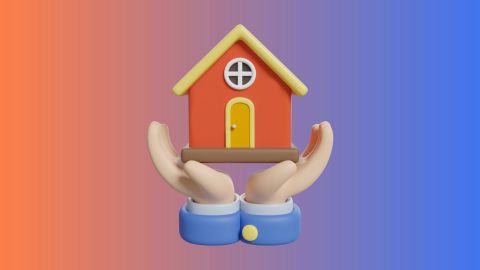When working with volumes, it is common to encounter measurements in both cubic feet and cubic metres. Whether you are involved in construction, shipping, or any field requiring precise volume calculations, understanding the cubic feet to cubic meter conversion is essential. This knowledge ensures accuracy in planning, budgeting, and resource management. Read on to learn more about how to convert cubic feet to cubic meter and explore some popular conversions used across industries.
What is cubic feet?
Cubic feet (ft³) is a unit of volume used in the imperial and U.S. customary systems. It represents the volume of a cube with sides measuring one foot each. Commonly used in construction and shipping, one cubic foot is approximately 7.48 gallons or 28.32 litres. The volume of a space is calculated by multiplying its length, width, and height in feet. Cubic feet are widely employed in measuring the volume of rooms, containers, and other three-dimensional spaces.
Are you planning construction or a home improvement project? Did you know that a loan against property can help you finance large-scale projects by unlocking the potential of your property? It is a smart way to ease cash flow for critical expenses without compromising ownership. By pledging the value of your own property, you can access large funds to protect your intellectual assets, fuel innovation —all with flexible repayment options and competitive interest rates. Explore our offers on loan against property today!
History of cubic feet
The cubic foot is a unit of volume measurement derived from the foot, a traditional unit of length that dates back to ancient times. The foot itself has origins in various early civilizations, where it was roughly based on the length of a human foot. Over centuries, the foot was standardized in different cultures, including the Roman foot and later the Imperial foot used in Britain.
The cubic foot emerged as a natural extension of measuring three-dimensional space, representing the volume of a cube with sides one foot in length. It became widely used in English-speaking countries for construction, shipping, and trade, especially before the adoption of the metric system.
Today, while many countries use the metric system (cubic meters) for volume, the cubic foot remains prevalent in the India, United States, Canada, and parts of the UK for various practical applications like measuring room volumes, cargo space, and heating or cooling capacities.
Cubic feet to other units
1 Cubic foot |
2.30 acre |
1 Cubic foot |
0.11 Square yard (yd2) |
1 Cubic foot |
0.09 square meter (m2) |
1 Cubic foot |
1 square feet (sq. ft) |
1 Cubic foot |
12 inch (in) |
What is cubic metre?
A cubic metre (m³) is a metric unit of volume representing the volume of a cube with sides measuring one metre each. It is widely used in scientific, engineering, and everyday applications. One cubic metre is equivalent to 1,000 litres or approximately 35.314 cubic feet. The volume of a space is calculated by multiplying its length, width, and height in metres. Cubic metres are commonly used in the metric system for measuring the volume of objects, substances, and spaces.
Cubic meter to other conversion units
Easily convert cubic meters to other volume units like liters, cubic feet, gallons, and more. Simplify your calculations with accurate and quick conversions for any measurement need.
Cubic Meter (m³) |
Equivalent in Other Units |
1 Cubic Meter (m3) |
1,000 liters (L) |
1 Cubic Meter (m3) |
1,000,000 milliliters (mL) |
1 Cubic Meter (m3) |
35.3147 cubic feet (ft³) |
1 Cubic Meter (m3) |
1.30795 cubic yards (yd³) |
1 Cubic Meter (m3) |
61023.7 cubic inches (in³) |
1 Cubic Meter (m3) |
6.28981 barrels (oil, US) |
1 Cubic Meter (m3) |
264.172 gallons (US liquid) |
1 Cubic Meter (m3) |
219.969 gallons (UK/Imperial) |
1 Cubic Meter (m3) |
1056.69 quarts (US liquid) |
1 Cubic Meter (m3) |
845.35 quarts (UK/Imperial) |
1 Cubic Meter (m3) |
2113.38 pints (US liquid) |
1 Cubic Meter (m3) |
1690.7 pints (UK/Imperial) |
1 Cubic Meter (m3) |
1000 deciliters (dL) |
1 Cubic Meter (m3) |
10 hectoliters (hL) |
1 Cubic Meter (m3) |
0.000810713 acre-feet |
What is cubic foot to cubic meter conversion?
When working with volumes, especially in contexts involving construction, shipping, or other industries, converting measurements from cubic feet to cubic metres is a common requirement. Here are some popular cubic feet to cubic metre conversions that are frequently encountered:
Cubic Feet |
Cubic Meters |
Conversion Formula |
1 |
0.0283168 |
Cubic Meters = Cubic Feet × 0.0283168 |
10 |
0.283168 |
Cubic Meters = Cubic Feet × 0.0283168 |
20 |
0.566336 |
Cubic Meters = Cubic Feet × 0.0283168 |
50 |
1.41584 |
Cubic Meters = Cubic Feet × 0.0283168 |
100 |
2.83168 |
Cubic Meters = Cubic Feet × 0.0283168 |
500 |
14.1584 |
Cubic Meters = Cubic Feet × 0.0283168 |
1,000 |
28.3168 |
Cubic Meters = Cubic Feet × 0.0283168 |
5,000 |
141.584 |
Cubic Meters = Cubic Feet × 0.0283168 |
10,000 |
283.168 |
Cubic Meters = Cubic Feet × 0.0283168 |
50,000 |
1,415.84 |
Cubic Meters = Cubic Feet × 0.0283168 |
These conversions serve as quick references when you need to switch between the imperial system's cubic feet and the metric system's cubic metres.
Did you know? Just like getting your volume conversions right is key to making any project run smoothly, having the right financial support can make a huge difference too. If you own property, you can use its value to secure funds through a loan against property. It is a smart way to get access to the money you need for large-scale projects without dipping into your savings. Curious to know if you are eligible? Check your eligibility now and see how this could work for you!
What is the relation between cubic feet and cubic metres
Cubic feet and cubic metres are units of volume used in different measurement systems. The key relation lies in the conversion factor: 1 cubic foot is approximately equal to 0.0283168 cubic metres. This conversion factor allows for seamless transitions between the imperial and metric systems when dealing with volume measurements.
How to convert cubic feet to cubic metre
Converting cubic feet to cubic metres involves a straightforward multiplication using the conversion factor. The formula is:
Cubic meters = Cubic feet × 0.0283168
Cubic feet to cubic metre formula with example
Let us use a practical example. Suppose you have a volume of 500 cubic feet, and you want to express it in cubic metres. Applying the formula:
Cubic meters = 500 cubic feet × 0.0283168
Cubic meters = 14.1584
So, 500 cubic feet is approximately equivalent to 14.1584 cubic metres.
Pro tip: Accurate volume conversions are not just numbers—they can directly impact project costs. Similarly, unlocking the value of your property through a loan against property can ease financial planning for large-scale ventures. By pledging the value of your own property, you can access large funds to protect your intellectual assets, fuel innovation —all with flexible repayment options and competitive interest rates. Explore our offers on loan against property today!
Cubic feet to cubic meter conversion units
1 Cubic Feet to Cubic Meter |
0.028 |
2 Cubic Feet to Cubic Meter |
0.057 |
3 Cubic Feet to Cubic Meter |
0.085 |
4 Cubic Feet to Cubic Meter |
0.113 |
5 Cubic Feet to Cubic Meter |
0.142 |
6 Cubic Feet to Cubic Meter |
0.17 |
7 Cubic Feet to Cubic Meter |
0.198 |
8 Cubic Feet to Cubic Meter |
0.227 |
9 Cubic Feet to Cubic Meter |
0.255 |
10 Cubic Feet to Cubic Meter |
0.283 |
11 Cubic Feet to Cubic Meter |
0.311 |
12 Cubic Feet to Cubic Meter |
0.34 |
13 Cubic Feet to Cubic Meter |
0.368 |
14 Cubic Feet to Cubic Meter |
0.396 |
15 Cubic Feet to Cubic Meter |
0.425 |
16 Cubic Feet to Cubic Meter |
0.453 |
17 Cubic Feet to Cubic Meter |
0.481 |
18 Cubic Feet to Cubic Meter |
0.51 |
19 Cubic Feet to Cubic Meter |
0.538 |
20 Cubic Feet to Cubic Meter |
0.566 |
Useful length conversion units
Planning a big project? Just like knowing cubic metre equivalents simplifies things, having financial flexibility can make ambitious plans a breeze. That’s where a loan against property comes in—it lets you access funds without giving up ownership of your property.
Whether it’s for business expansion, education, medical expenses, or even consolidating debt, this secured loan offers lower interest rates and flexible repayment terms. It’s a smart way to make your property work for you. Ready to explore your options? Check your offer in just 2 clicks!




